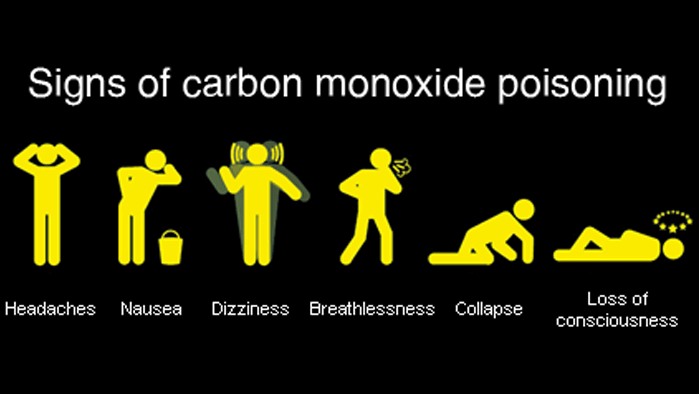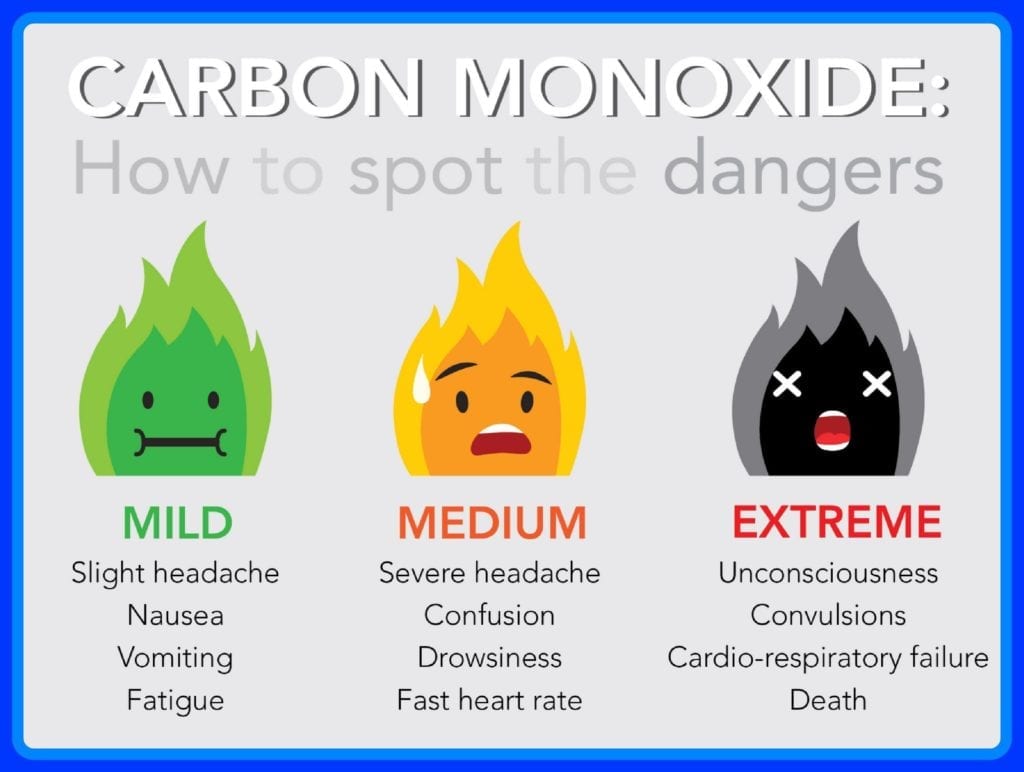Table Of Content

To be treated successfully, carbon monoxide poisoning must be recognized long before the patient turns bright red. While you are in hospital, you will usually have tests to check the level of carbon monoxide in your blood. If the level is high, you may be given oxygen through a mask.
What can cause carbon monoxide levels to rise?
Carbon Monoxide leak causes building evacuation in Bismarck - KX NEWS
Carbon Monoxide leak causes building evacuation in Bismarck.
Posted: Thu, 04 Jan 2024 08:00:00 GMT [source]
It’s also important to avoid leaving your car running inside your garage or other enclosed spaces. Breathing in smoke during a fire also can cause carbon monoxide poisoning. And smoking through a water pipe, called a hookah, has been linked to increasing numbers of younger people getting carbon monoxide poisoning.
Long term effects
There’s a little in the air around us, but it’s dangerous if too much is trapped in your home. Its radioactive particles cause damage when breathed in or swallowed. It gets into buildings through cracks and holes in floors and walls, and around plumbing and wiring. You can’t smell or see radon, but a simple test can tell you if your home has too much. Its spores can cause a stuffy nose, cough, sore throat, and itching.
How is carbon monoxide poisoning treated?
Carbon monoxide’s affinity to bind with hemoglobin is more than 200 times greater than that of oxygen for hemoglobin. Blockages in chimneys, flues, or vents can prevent gas from filtering outdoors, causing a buildup indoors. Carbon monoxide poisoning is a potentially fatal illness that occurs when carbon monoxide gas builds up in the blood. If you are with someone having chest pain, move them outside to fresh air and call 911.
What are symptoms of carbon monoxide poisoning?
Breathing the fumes causes carbon monoxide to replace oxygen in the blood. Anyone exposed to carbon monoxide needs to get into fresh air and seek medical care right away. Call emergency medical services (EMS) or dial 911 right away for someone who's in a coma or can't respond. Smoking cigarettes, cigars, or pipes indoors also increases exposure to carbon monoxide.
Some performed well, others failed to alarm even at very high CO levels, and still others alarmed even at very low levels that don’t pose any immediate health risk. And unlike a smoke detector, where you can easily confirm the cause of the alarm, CO is invisible and odorless, so it’s harder to tell if an alarm is false or a real emergency. CO is found in fumes produced any time you burn fuel in cars or trucks, small engines, stoves, lanterns, grills, fireplaces, gas ranges, or furnaces. CO can build up indoors and poison people and animals who breathe it. Carbon monoxide, or CO, is a deadly gas that's produced when fossil fuels are burned. It's colorless, odorless and silent, making it virtually impossible to detect on its own until it's too late.
How do I protect myself and my family from carbon monoxide poisoning?
Faulty boiler likely causes death of 3 people, authorities say - WZZM13.com
Faulty boiler likely causes death of 3 people, authorities say.
Posted: Fri, 22 Dec 2023 08:00:00 GMT [source]
If CO poisoning has occurred, it can often be diagnosed by a blood test done soon after exposure. You should go to the hospital right away if you’ve been exposed to a source of CO, even if you don’t show symptoms of CO poisoning. Everyone is exposed to small amounts of carbon monoxide throughout the day. Have a qualified technician inspect and maintain your heating systems, including furnaces, boilers, and chimneys, to ensure proper ventilation and safe operation. If your heating system isn’t working correctly, it can produce CO.
Stay on top of latest health news from Harvard Medical School.
Because CO more easily occupies the space where oxygen would bind, its presence means that less oxygen can enter the hemoglobin. If a family pet suddenly becomes ill or unexpectedly dies, the owners should rule out CO poisoning as one of the possible causes. Second, if you shop for a CO detector, do some research on features and don’t select solely on the basis of cost. Open doors and windows, turn off combustion appliances and leave the house.

Carbon monoxide, or CO, is composed of one molecule of carbon and one molecule of oxygen, held together by a triple bond. Keep chimneys, flues, and vents clear of debris and blockages. Hire a professional to clean your chimney every year, and if you haven’t used the chimney for many years. Burning wood is especially dirty and can cause serious health concerns if your chimney isn’t functioning correctly. Carbon monoxide poisoning can be treated if you seek immediate medical attention.
It’s important to evacuate your home immediately when your CO alarm sounds. We breathe in CO like normal air with no irritation to our nose or throats. Then, our blood cells attach with CO molecules instead of oxygen molecules, starving our organs from the oxygen they need. Unlike natural gas or LP gas, which have a characteristic odor added to them to alert you, carbon monoxide has no fumes and no color.
If you have mold allergies, lung problems, or a weak immune system, these spores can lead to a serious lung infection. Mold grows where there’s moisture, so watch for leaks in plumbing, walls, and the roof. Use air conditioning or a dehumidifier to keep humidity levels under 50%. Clean up mold with soap and water, or use 1 cup of household bleach in 1 gallon of water. Unfortunately, it is often a postmortem examination that reveals such a bright red coloring.
(Check your state regulations.) “It isn’t a bad idea to have one on every level,” Smeltzer says. Nonspecific symptoms like fatigue can make CO poisoning a difficult public health issue to deal with, Smeltzer says. “A lot of times people will assume that they are sick from a virus, when it is actually a CO problem in their indoor environment,” she says. “Exposure to high levels can lead to death, but even low levels of CO exposure can impact the health of sensitive individuals,” Smeltzer says. Smeltzer says hospital data shows a clear spike in CO poisoning cases during times of high generator use, like after natural disasters. Humidity above 50% may invite bacteria, fungi, and other germs.
Some common man-made releases of carbon monoxide are from fumes of vehicles, small engines (like those in lawnmowers and generators), stoves, fireplaces and furnaces. The most common symptoms of CO poisoning are headache, dizziness, weakness, upset stomach, vomiting, chest pain, and confusion. CO symptoms are often described as “flu-like.” If you breathe in a lot of CO it can make you pass out or kill you.
Using a portable generator inside your home, garage, or other enclosed space can quickly produce dangerous levels of CO. When carbon monoxide is inhaled, it replaces oxygen attached to the pigment hemoglobin in the blood. This hampers the delivery of oxygen to various tissues in the body, which can lead to serious damage and even death. Carbon monoxide poisoning is a leading cause of death in the United States, killing thousands each year and mostly affecting people in their sleep. When CO exposure reaches the highest levels, loss of consciousness can occur. If someone reaches the victim and moves them to fresh air and treatment, recovery is possible.
The Centers for Disease Control and Prevention recommends that every home have at least one working carbon monoxide alarm. Carbon monoxide is an odorless, tasteless gas, but exposure can be fatal. Anyone with carbon monoxide poisoning needs urgent medical treatment. Your healthcare provider will determine further treatment for carbon monoxide exposure. Newer models have oxygen sensors that shut off the heater when the oxygen level in the room falls below a certain level.
Horizontal vent pipes for appliances, such as a water heater, should go up slightly as they go outside. Anything that uses a carbon-based fuel source can produce carbon monoxide. Here are the most common sources of carbon monoxide in a house. Carbon monoxide is a colorless, odorless, and tasteless gas that is toxic to humans and animals. It forms during incomplete combustion (without enough oxygen) of carbon-based fuels, such as gasoline, natural gas, propane, and wood. It’s a dangerous flammable gas that can be explosive in large quantities.

No comments:
Post a Comment